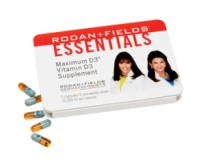 Sun lovers continue to crowd the beaches every summer, despite widespread awareness of the risk of skin cancer. Now, a recent study published in the journal Cell may partially explain why.
Sun lovers continue to crowd the beaches every summer, despite widespread awareness of the risk of skin cancer. Now, a recent study published in the journal Cell may partially explain why.
According to the researchers, chronic exposure to UV radiation causes endorphins, or the body’s feel-good hormones, to release and set off a reaction like that triggered by certain drugs, leading to physical dependence, tolerance and addiction-like behavior in rodents.
“It’s surprising that we’re genetically programmed to become addicted to something as dangerous as UV radiation, which is probably the most common carcinogen in the world,” says senior study author David Fisher of Massachusetts General Hospital and Harvard Medical School. “We suspect that the explanation involves UV’s contribution to vitamin D synthesis in the skin. However, in the current time, there are much safer and more reliable sources of vitamin D.”
For some time, scientists have observed a link between sunlight and mood, as evidenced by Seasonal Affective Disorder (SAD), a form of depression related to changes in the season.
The connection between light and mood may also partially explain why indoor tanning is still in widespread use. Centers for Disease Control and Prevention researchers reviewed questionnaires from U.S. females ages 18-34 from 2010 and 2011, they found over 25% had used an indoor tanning bed at least once in the last year, while more than 15% had engaged in frequent tanning (10 times or more) over the same period.
 Of course, the risks of UV exposure still far outweigh the benefits due to the incidence of skin cancer and the effects of photoaging.. For best results, avoid prolonged UV exposure, eat vitamin D-enriched foods like salmon, mushrooms, milk and cereal, and try a vitamin D supplement, such as ESSENTIALS Maximum D3 Vitamin D3®, as alternative healthy sources of vitamin D.
Of course, the risks of UV exposure still far outweigh the benefits due to the incidence of skin cancer and the effects of photoaging.. For best results, avoid prolonged UV exposure, eat vitamin D-enriched foods like salmon, mushrooms, milk and cereal, and try a vitamin D supplement, such as ESSENTIALS Maximum D3 Vitamin D3®, as alternative healthy sources of vitamin D.
Source:
